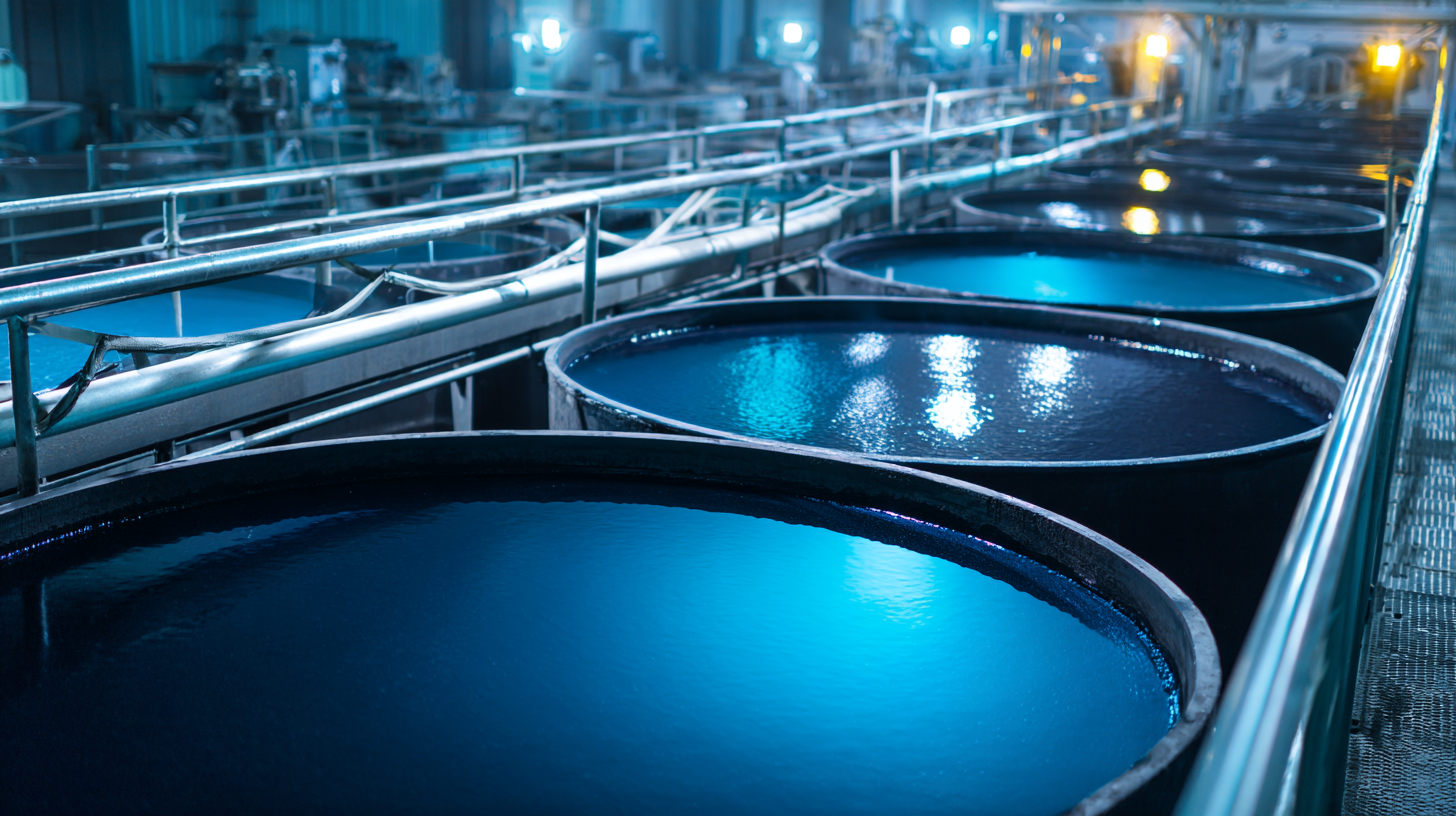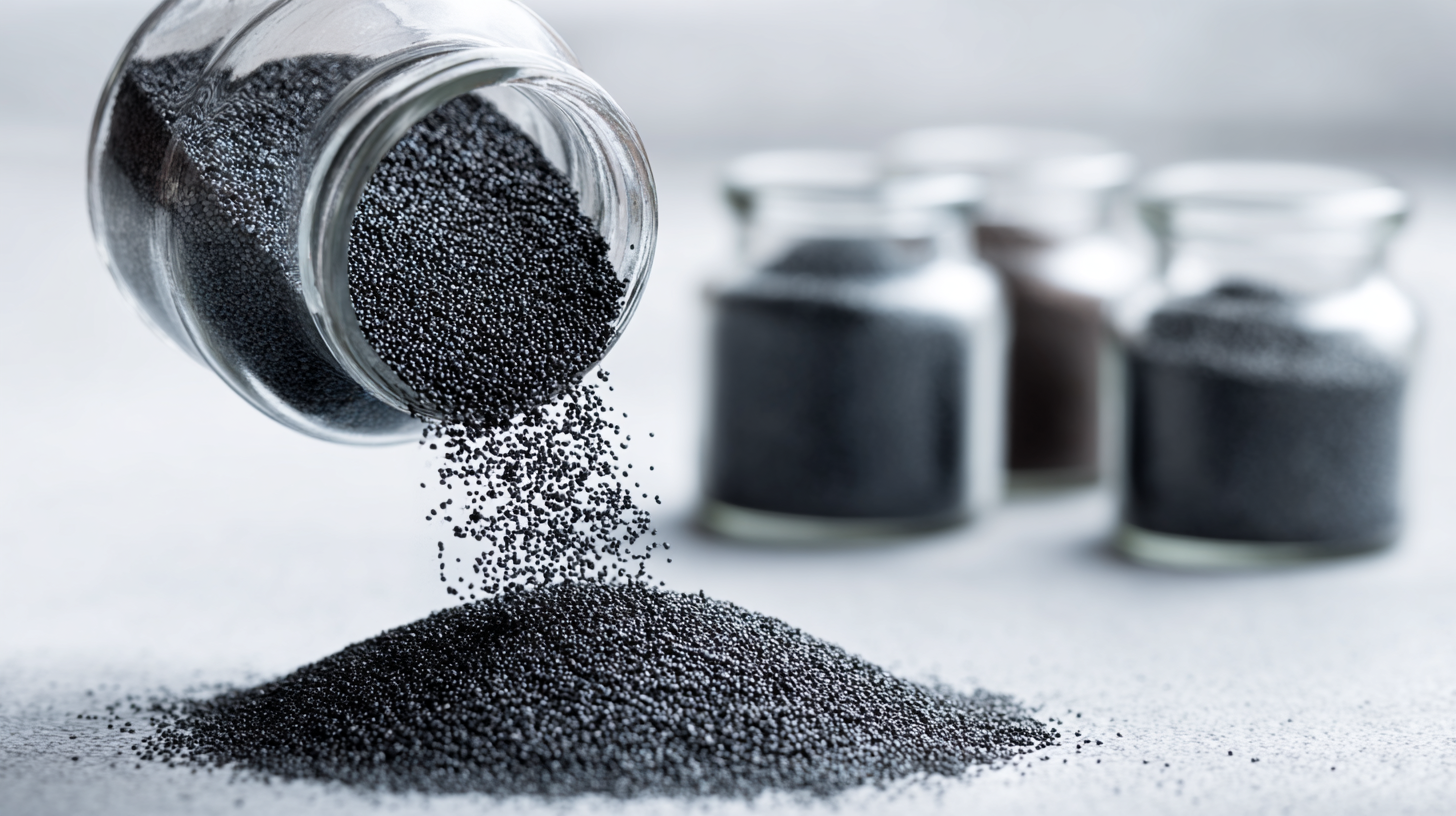
Leave Your Message
-
 CONTACT WhatsApp
CONTACT WhatsApp -

-

-
 CONTACT NUMBER
CONTACT NUMBER -
 CONTACT EMAIL
CONTACT EMAIL





Choosing the right filter media is crucial for effective water treatment, as it significantly impacts system performance and water quality. According to a report by the Water Research Foundation, approximately 80% of water treatment facilities rely on some form of filtration to remove contaminants, highlighting the importance of selecting appropriate filter media. With numerous options available, such as activated carbon, sand, and membrane filters, understanding the specific requirements of your water treatment needs is essential. Each type of filter media offers unique properties and benefits that can influence the efficiency and cost-effectiveness of the treatment process. As water quality regulations become increasingly stringent, the need for optimized filter media selection is more critical than ever, making this guide an indispensable resource for anyone involved in water treatment management.

When it comes to water treatment, selecting the appropriate filter media is crucial for achieving optimal results. There are several types of filter media available, each designed to target specific contaminants. For example, activated carbon is widely used for its ability to adsorb organic compounds, chlorine, and other unwanted taste and odor elements. This makes it ideal for treating municipal water supplies and improving the aesthetic quality of drinking water.
In addition to activated carbon, sand and gravel filters play an essential role in the removal of larger particles and sediments. These traditional filtration methods are commonly employed in both residential and industrial systems. Meanwhile, membrane filters, such as reverse osmosis, are effective in reducing dissolved solids and pathogens from water. Each type of filter media presents unique advantages and is suited for different applications, making it vital to understand their characteristics before making a decision. By analyzing your specific water treatment needs, you can select the filter media that will provide the most efficient and effective purification for your situation.
When selecting filter media for water treatment, evaluating material properties is crucial to ensure optimal performance and efficiency. Various studies indicate that the choice of filter media can significantly impact the removal efficiency of pollutants. For instance, a report from the American Water Works Association (AWWA) found that granular activated carbon (GAC) can reduce organic contaminants by up to 90% under appropriate conditions, highlighting its effectiveness for municipal and industrial applications. Additionally, the porosity and surface area of the media play vital roles in determining its filtration capacity and durability.
Another aspect to consider is the specific use-case of the filter media. For example, sand filters, traditionally used for their simplicity and low cost, exhibit a smaller surface area compared to advanced media such as zeolite and membrane filters. The Water Environment Federation (WEF) notes that zeolite can enhance ammonium removal due to its high cation exchange capacity, making it a suitable option for wastewater treatment plants. Understanding these material properties helps in aligning your filter media choice with your water treatment goals, ensuring that you engage a solution that meets both regulatory standards and operational efficiency.
When selecting filter media for water treatment, cost-effectiveness is a critical consideration, especially for budget-conscious organizations. According to a report by the Water Quality Association, approximately 30% of the total water treatment costs can be attributed to filter media. This highlights the importance of analyzing various options to ensure that financial constraints do not compromise water quality.

Several budget-friendly filter media options have gained popularity in recent years. For instance, activated carbon remains one of the most economical choices, providing excellent adsorption properties for pollutants and odors. A study from the American Water Works Association revealed that using activated carbon can reduce operational costs by as much as 25% compared to more expensive alternatives like reverse osmosis systems. Additionally, sand filters, which are both affordable and efficient, have shown to lower installation and maintenance costs significantly, with estimates suggesting a reduction of up to 40% in some cases.
Incorporating these economically viable filter media not only supports a sustainable budget but also ensures effective water treatment. Analyzing long-term performance, maintenance requirements, and replacement cycles is essential for making informed choices that enhance fiscal responsibility while maintaining high water quality standards.
 When selecting filter media for water treatment, considering the environmental impact is paramount. The decline in biodiversity due to pollution highlights the urgent need for sustainable filtration solutions that mitigate harm to ecosystems. Innovative approaches, such as using bio-based nanomaterials and eco-friendly biopolymers, pave the way for the development of effective adsorbents that can efficiently remove pollutants from water without causing further ecological damage.
When selecting filter media for water treatment, considering the environmental impact is paramount. The decline in biodiversity due to pollution highlights the urgent need for sustainable filtration solutions that mitigate harm to ecosystems. Innovative approaches, such as using bio-based nanomaterials and eco-friendly biopolymers, pave the way for the development of effective adsorbents that can efficiently remove pollutants from water without causing further ecological damage.
Moreover, the implementation of sustainable granular materials has shown promise in enhancing the removal of natural organic matter, turbidity, and microplastics. These materials not only improve water quality but are also derived from low-value agricultural waste, contributing to a circular economy. By focusing on environmentally responsible options, water treatment systems can play a significant role in protecting both public health and aquatic environments, ensuring cleaner water for future generations.
When selecting filter media for water treatment systems, durability plays a crucial role in ensuring both maintenance ease and operational efficiency. Durable filter media can withstand the demands of continuous flow and the challenges posed by various contaminants without degrading quickly. Materials such as ceramic, stainless steel, and certain synthetic fibers are often preferred for their longevity, requiring less frequent replacements, thus minimizing downtime and maintenance costs.
Moreover, the right choice of durable filter media contributes to enhanced filtration performance over time. High-quality filter media can maintain their effectiveness even under harsh conditions, ensuring that water quality remains consistent. Furthermore, investing in durable options not only improves operational efficiency but also promotes sustainability by reducing waste associated with frequent media replacements. Therefore, careful consideration of the durability of filter media is essential for optimizing overall water treatment processes.
| Filter Media Type | Material Composition | Typical Lifespan (Years) | Filtration Efficiency (%) | Maintenance Frequency |
|---|---|---|---|---|
| Sand Filter | Silica Sand | 5-10 | 80-90 | Monthly |
| Activated Carbon | Coconut Shell, Coal | 1-3 | 85-95 | Every 6 months |
| Ceramic Filter | Clay, Minerals | 5-15 | 90-99 | Annually |
| Glass Filter Media | Recycled Glass | 6-12 | 85-95 | Every 6 months |
| Polymer Filter Media | Synthetic Polymers | 3-5 | 75-85 | Quarterly |






